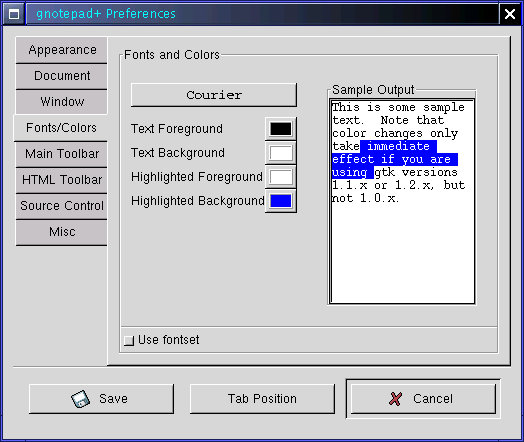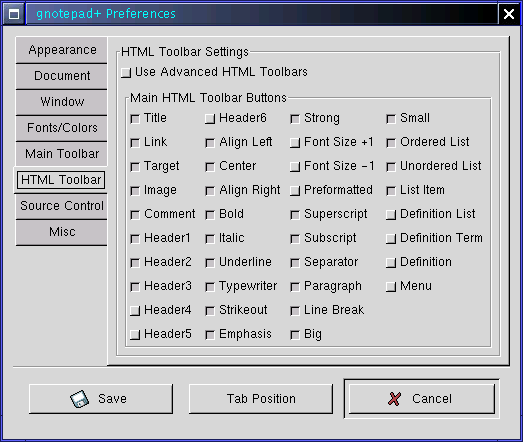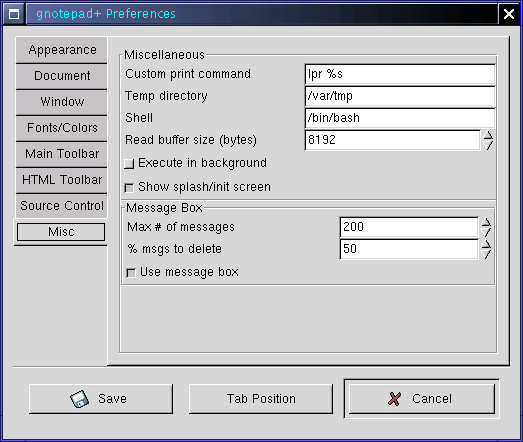
Note that the current settings will always be the one that is selected by default on any page of the Preferences Dialog.
3.1.1.1 Toolbar Settings
The "Raised Buttons" option is only available if you are using GNOME, or if you are using GTK+ versions 1.1 and up.
3.1.1.2 Document Tabs
The Document Tabs can be positioned differently: Top, Bottom, Left, or Right. There is no difference in usage in any of the positions; this is purely an aesthetic setting.
3.1.1.3 Message/Status Bar
One can elect to show or hide the message bar. However, it is not recommended since the message bar is used to show information status messages to you while gnotepad is running.








